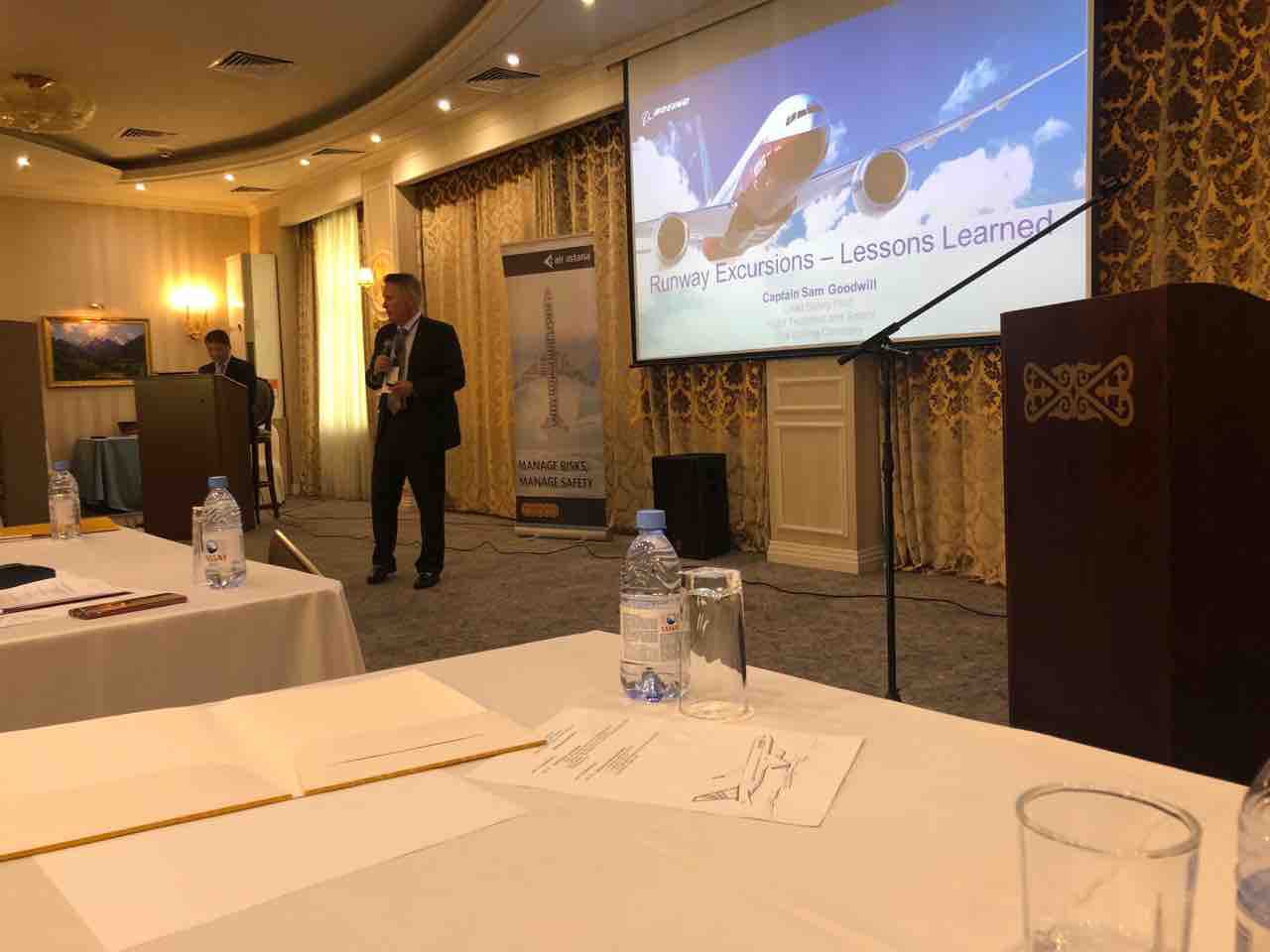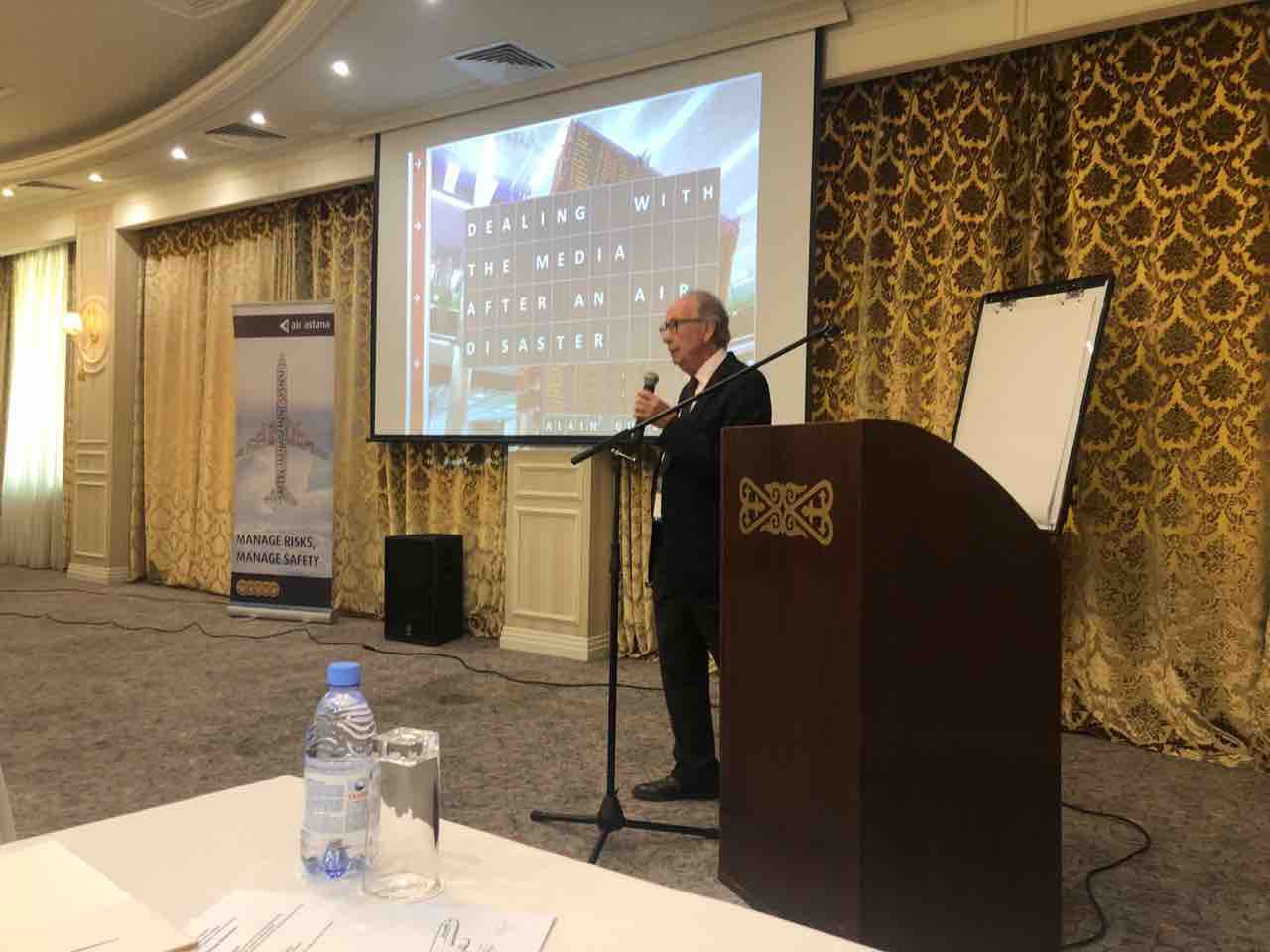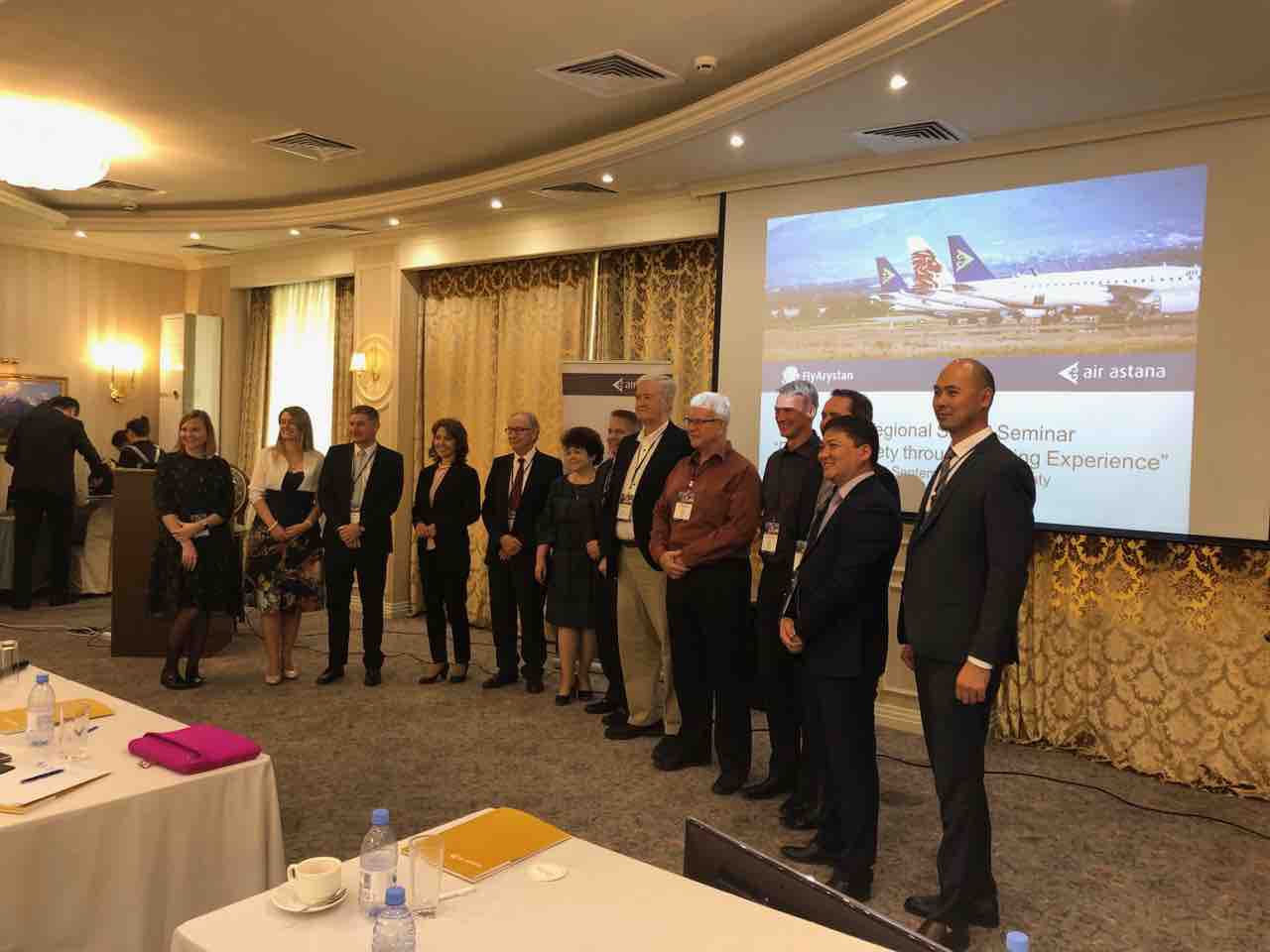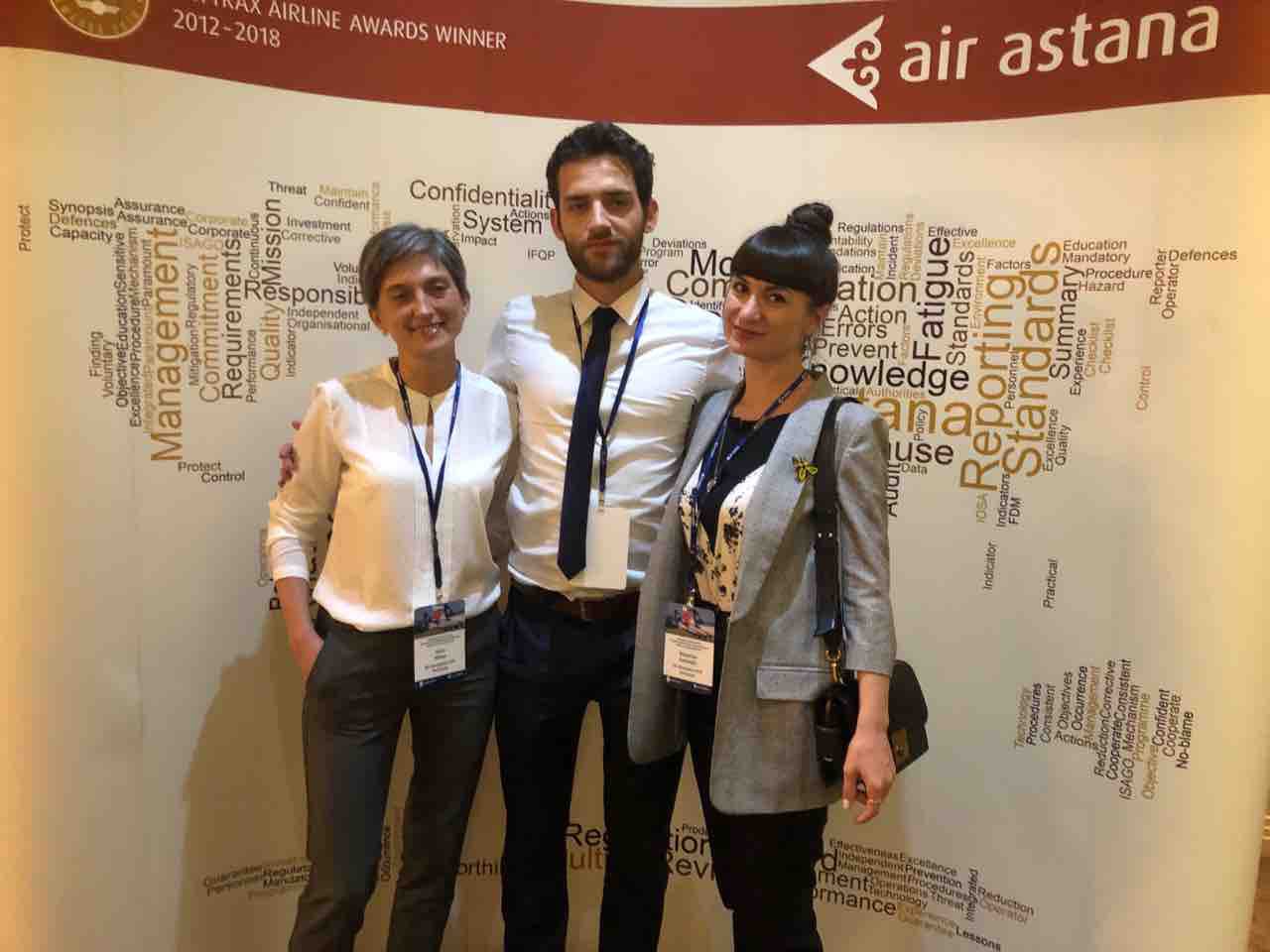ALMATY, KAZAKHSTAN – 24 September 2019. In the second day of Air Astana’s safety summit event, the hosts presented us with more interesting stories in aviation safety.
Our presenter, Mr. Aglanbek Sarmukanov, first welcomed on stage Boeing representative mr. Sam Goodwill who had a presentation yesterday as well. Mr. Goodwill had a presentation about runway excursions and lessons learnt that was a carbon copy of the presentation we have witnessed in Quito, Ecuador. The highlight of his presentation was that there are often more than one factor contributing to runway excursion incidents and that there are 3 types of such incidents: touchdown point (for example one incident was that the aircraft touched down using 72% of the runway), touchdown speed and deceleration where the crew deploys late thrust reverses.

Sam Goodwill, BOEING
Just like yesterday, another presenter in Bjorn Henning took on stage once again. However, this time it was not only about fatigue but more about evidence based training approach. The idea behind is to :
- identify certain hazard (he showcased choosing a hazard from the predefined list),
- associate events to that hazard (example is to associate it to a report the crew member submitted)
- find out the worst case scenarios
- associate barrier owners
All of this data then goes to 2 databases: safety repository and training repository.
Both databases are evaluated by training algorithm that then distributes info to the trainee and trainer who have then personalized information about the trainee’s training programs.
DE-ICING
Air Astana’s Aslan Abilpeissov who is a Senior Officer Safety Performance Ground Operations explained about the de-icing processes and how Air Astana approaches the issue. Astana is known of it’s adverse weather conditions especially in winter, therefore it is expected that Air Astana has one of the best practices in this field. As shown by mr. Abilpeissov de-icing is a process to remove snow-ice deposits from the aircraft surfaces. It is usually used with liquid, however it has a limited period of time in which it is effective. Of course, they are using both de-icing and anti-icing systems with the latter being the system that prevents ice from forming on aircraft surface.
Air Astana has developed de-icing procedure manual based on SAE standard and also a Winter operations station manual. They also have access to IATA’s database of DAQCP (De-Icing/Anti-Icing Quality Control Pool).
Mr. Abilpeissov stressed at the end of the presentation that de-icing must not be compromised by any other means.
MEDIA AND AIR DISASTERS
In our opinion one of the best presentations on this year’s event had mr. Alain Guilldou, who came from Bureau of Enquiry and Analysis for Civil Aviation Safety(BEA), France. His intriguing presentation was about how to deal with the media after an air disaster. We all know that the accident can happen, but what to do after the nightmare scenario does occur?
He wanted the audience to understand the media’s point of view. Journalism is a business and therefore need profitability and to attract audience. Air disasters are usually on headlines and media can put a lot of pressure on operators. However, media won’t do the coverage the same if the accident happened in USA or Kenya. It depends on multiple factors such as WHEN – WHERE – FATALITIES (number/nationality) – OPERATOR – TYPE OF AIRCRAFT. Depending on these factors, media will do the cover accordingly.

Alain Guilldou, BEA
Media’s basic tools are:
- Sensationalism
- Controversies
- TV explanations
- Drones (shooting pictures of the accident site)
All of this can hamper investigations taking place as people can not understand the process of a safety investigations. The affected operator can choose one of the options: to say a lot about the accident or to keep words at minimum. However, the less info is given the more speculative they become, while on the other side the more info is given, they demand more. It’s important to understand both sides of the coin and how to approach it systematically.
Tips for operators were:
- begin effective media relations before any such event
- prepare English version of your statement on the website
- include contact info of your media representative
- publish press release short – less than 1 page with clear headline
- develop the message around 5 Ws (what, why, when, who, which) + H (how)
FINISHING TOUCH
The day has been finished by presentation by the host mr. Sarmukanov who had a nice presentation about the human factors and investigator biases. It is important to identify types of biases and act to their prevention. Also it is important to develop a new view at human factors such as:
- Before we asked: who is responsible for the outcome / Now we ask: what is responsible for the outcome
- Before we would blame human error as a cause / Now we state that human error is a symptom of deeper trouble
- Before we made it acceptable human error as a conclusion of an investigation / Now we use human error as starting point in investigations

The last presenter was IATA’s Tatiana Aleksandrova who gave an insight about CST (Collaborative Safety Team) and it’s goals to create a bridge between the authorities and the industry. However, it will be a long process to establish a functional relationship between those stakeholders as many countries struggle with internal affairs.
The summit was very nicely organized and we would like to send our regards to an exceptional team of Air Astana. The summit had a lot of interesting stories and educated all attendees about the challenges and struggles that are in aviation world as well as positive trends in the industry.








